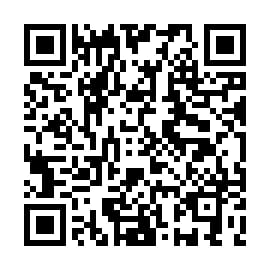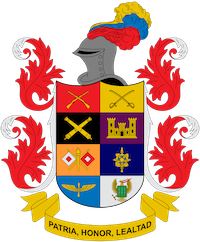Graphic humor and its historical-political value and importance
Abstract
The real value and purpose of caricature is not widely known. Ignorance in this respect implies that graphic humor provokes diverse reactions that can result in violations of civil liberties. The present research was developed by means of qualitative research techniques, allowing us to find that throughout history caricature has been used extensively to represent realities that by their very nature prefer to be obviated, but that in the end are testimony of the basest and most perverse aspects of human nature. It was concluded that, although the artistic exercise of the caricaturist requires regulation, it is essential and imperative to protect his practice as it has demonstrated its value and usefulness in denouncing in a crude and direct way those uncomfortable or painful realities.
Downloads
References
Anderson, C. (septiembre de 2008). A Zulu King in Victorian London: Race, Royalty and Imperialist Aesthetics in Late Ninteenth-Century Britain. Visual Resources, 24(3), 299-319. https://doi.org/10.1080/01973760802284661
Barrón, A. (2017). El humorismo gráfico como reflejo de la polarización en Venezuela: un estudio de las caricaturas de Edo y Vicman desde el análisis crítico del discurso multimodal. Gláuks: Revista de Letras e Arte, 17(1), 144-169.
Ben-Ami, S. (12 de abril de 2019). Israel redobla la apuesta a la democracia iliberal. Clarín. Obtenido de https://www.clarin.com/opinion/israel-redobla-apuesta-democracia-iliberal_0_BPcQx-Mih.html
Blanco, J. A., Rojas, R., Aragón, U. d., & Faya, A. J. (2011). El otro paredón: asesinatos de la reputación en Cuba. Eriginal Books.
Bolívar, A. (2013). La construcción discursiva de la revolución bolivariana. Polarización y manipulación en la campaña electoral de 2012. Temas de Coyuntura(67), 131-163.
Bredekamp, H. (2007). Thomas Hobbes´s Visual Strategies. En P. Springborg (Ed.), The Cambridge Companion of Hobbes´s Leviatan (págs. 29-60). Cambridge University Press. https://doi.org/10.1017/CCOL0521836670.002
Buijzen, M., & Valkenburg, P. M. (mayo de 2004). Developing a Typology of Humor in Audiovisual Media. Media Psychology, 6(2), 147-167. https://doi.org/10.1207/s1532785xmep0602_2
Chaney, M. (2010). Heartfelt Thanks to Punch for the Picture: Frederick Douglas and the Transnational Joework of Slave Caricature. American Literature, 82(1), 57-90. https://doi.org/10.1215/00029831-2009-069
Chappatte, P. (2019). El fin de las viñetas políticas en el New York Times. Letras libres. Obtenido de https://www.letraslibres.com/espana-mexico/politica/el-fin-las-vinetas-politicas-en-el-new-york-times
Espejo, G. (24 de julio de 2018). Uribe vs Matador: las nuevas críticas del expresidente por una caricatura. Obtenido de LAFM: https://www.lafm.com.co/politica/uribe-vs-matador-las-nuevas-criticas-del-expresidente-por-una-caricatura
Gárate, M. (6 de octubre de 2015). El nacimiento de un monstruo. Amérique latine: mémoires et histories nationales(104), 87-104. Obtenido de https://journals.openedition.org/caravelle/1588 https://doi.org/10.4000/caravelle.1588
González, B. (1990). La caricatura política en Colombia. Credencial historia(10). Obtenido de https://www.banrepcultural.org/biblioteca-virtual/credencial-historia/numero-10/la-caricatura-politica-en-colombia
González, B. (2009). La caricatura en Colombia a partir de la independencia. Obtenido de https://www.banrepcultural.org/la-caricatura-en-colombia/texto01.html
Higgitt, R. (2017). Framing the transit: expeditionary culture and identities in Lieutenant E.J.W. Noble's caricatures of the 1874 transit of Venus expedition to Venus. Annals of Science, 1-26. https://doi.org/10.1080/00033790.2017.1328074 PMid:28573911
Kemble, R. (octubre de 2007). Mutations in America´s Perceptions of Its Professional Military Leaders. Armed Forces & Society, 34(1), 29-45. https://doi.org/10.1177/0095327X06293862
laSexta.com. (2019). La caricatura de Trump y Netanyahu que ha acabado con las viñetas políticas en The New York Times. Obtenido de https://www.lasexta.com/noticias/cultura/caricatura-trump-netanyahu-que-acabado-vinetas-politicas-the-new-york-times_201906125d00df390cf21df7ccbf2f0f.html
Lincoln, M. (2015). Emma Hamilton, war, and the depiction of feminity in the late eighteenth century. Journal of Maritime Research, 17(2), 135-145. https://doi.org/10.1080/21533369.2015.1094983
Lozada, M. (2004). El otro es el enemigo: imaginarios sociales y polarización. Revista Venezolana de Economía y Ciencias Sociales, 10(2), 195-209.
Meyer, J. C. (agosto de 2000). Humor as a Double-Edge Sword: Four Functions of Humor in Communication. Communication Theory, 10(3), 310-331. https://doi.org/10.1111/j.1468-2885.2000.tb00194.x
Redacción. (2019). New York Times dejará de publicar viñetas políticas tras polémica antisemita. La Vanguardia. Obtenido de https://www.lavanguardia.com/vida/20190611/462809713631/new-york-times-dejara-de-publicar-vinetas-politicas-tras-polemica-antisemita.html
Schmidt, S. (1992). Humor y política en México. Revista Mexicana de Sociología, 54(1), 225-250. https://doi.org/10.2307/3540785
Schneider, T. C. (septiembre-diciembre de 2015). The opposition to the Brazilian dictatorship abroad through cartoons and caricatures (1964-1979). História Unisinos, 19(3), 358-367. https://doi.org/10.4013/htu.2015.193.07.e
Taylor, D. F. (2015). Gillray´s Gulliver and the 1803 Invasio Scare. En D. Cook, & N. Seager (Edits.), The Afterlives of the Eighteenth-Century Fiction (págs. 212-232). Cambridge University Press. https://doi.org/10.1017/CBO9781107294424.011
Vega, A. (11 de diciembre de 2014). Caricaturas: los genios también exageran. Obtenido de artelista blog: https://www.artelista.com/blog/caricaturas-los-genios-tambien-exageran/
Wilson, T. (2015). Un pájaro progresivo: Pop Music, Propaganda, and the Struggle for Modernity in Argentina. Studies in Latin America Popular Culture, 33, 89-107. https://doi.org/10.7560/SLAPC3307
Copyright (c) 2021 Pablo Iregui Acosta (Autor/a)

This work is licensed under a Creative Commons Attribution-NonCommercial-NoDerivatives 4.0 International License.













